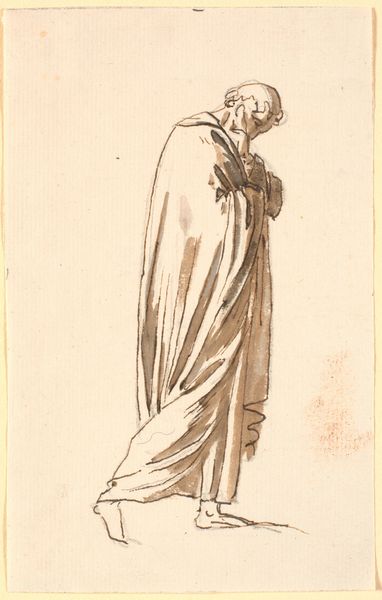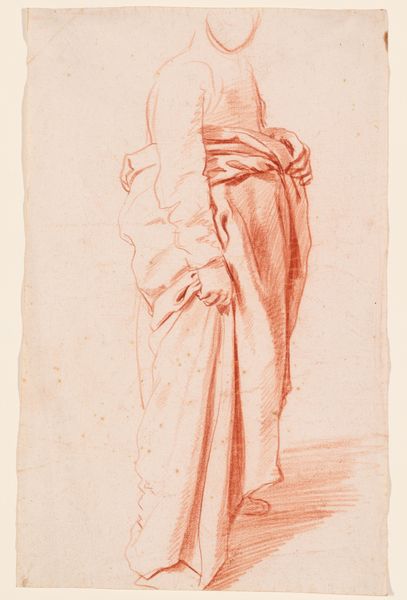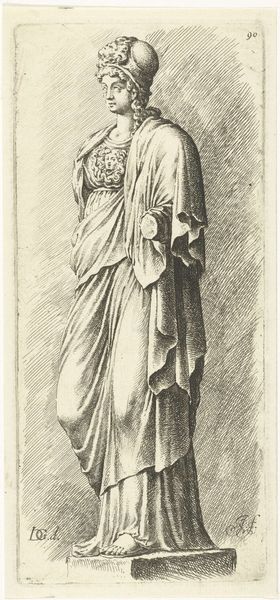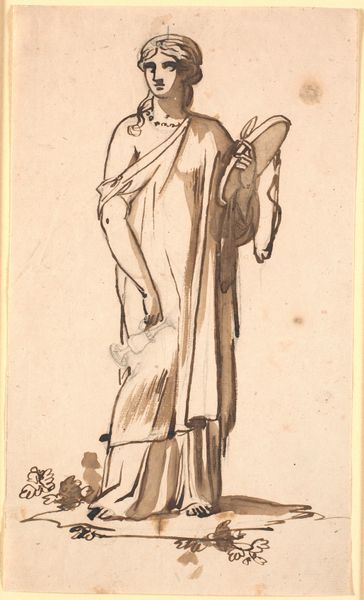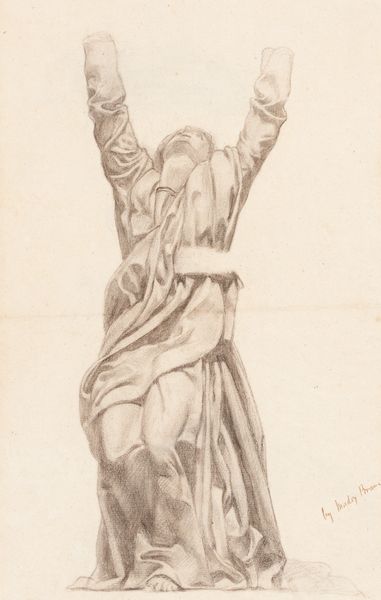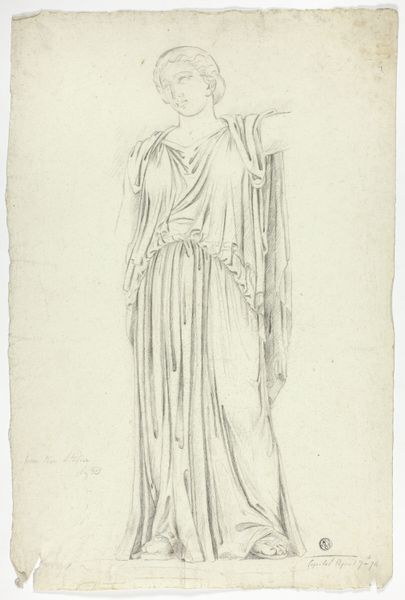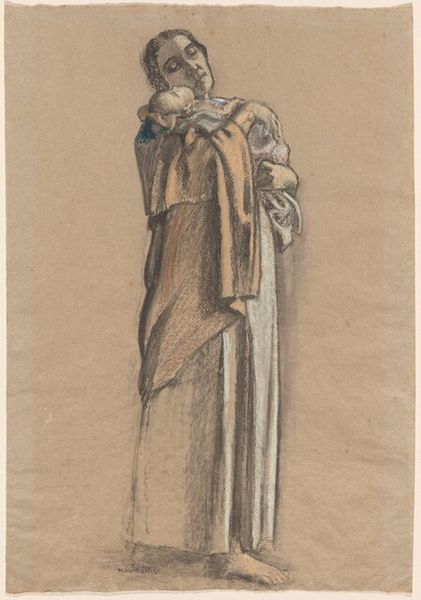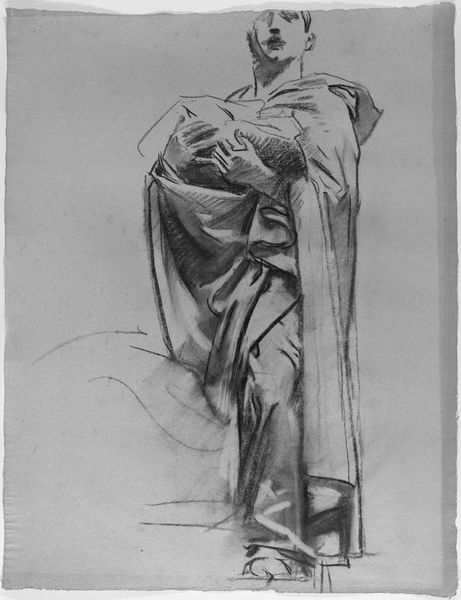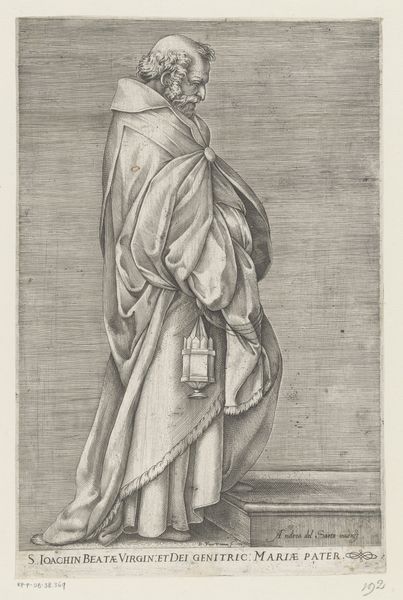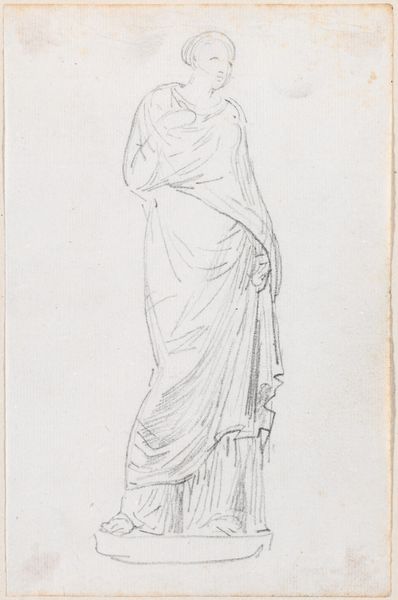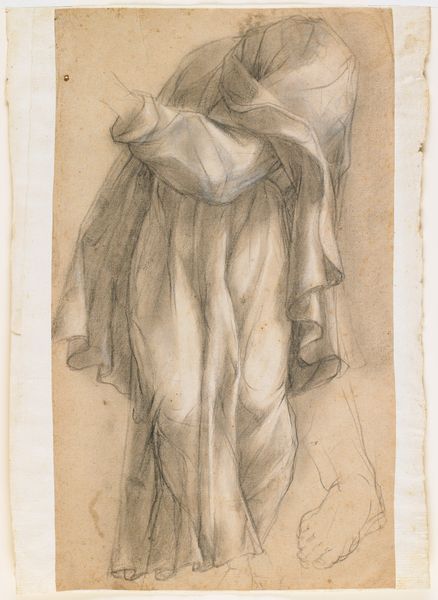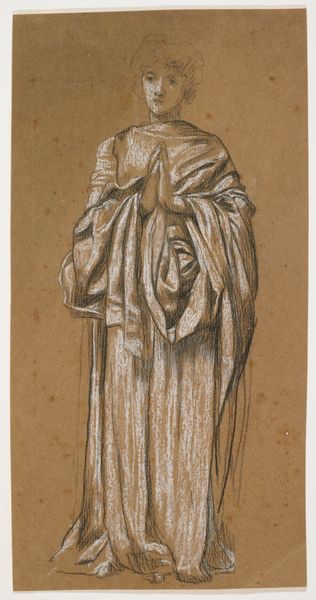
drawing, pencil
#
portrait
#
drawing
#
landscape
#
figuration
#
pencil drawing
#
pencil
#
portrait drawing
#
history-painting
#
academic-art
#
nude
#
realism
Dimensions: 12 5/16 x 6 1/2 in. (31.27 x 16.51 cm) (sheet)12 11/16 x 6 15/16 in. (32.23 x 17.62 cm) (mount)
Copyright: Public Domain
Editor: This is Salvino Salvini's pencil drawing, "Standing Female Martyr," from around the 19th century, currently housed here at the Minneapolis Institute of Art. The figure is so delicately rendered, and the folds of the fabric almost steal the show! What are your thoughts on this portrayal of a martyr, looking at it with a historical perspective? Curator: It's interesting, isn't it? In the 19th century, and especially within academic art circles, history painting was often used to promote certain political or moral agendas. Figures of martyrs, particularly female ones, often became vehicles to convey ideas about piety, suffering, and national identity. Consider how this image, rendered with such classical restraint, might function within that context. What message is conveyed, do you think, by depicting a martyr with this level of serene, almost passive, acceptance? Editor: It's almost… idealized? It doesn’t necessarily scream, “rebellion” or even "resistance". She seems resigned. Does that potentially tell us more about the *purpose* of this image and the values that it tries to reflect than about historical martyrs themselves? Curator: Precisely. These works are not always, or even primarily, about accurately portraying historical events. Instead, they serve to cultivate specific social virtues or even consolidate political power. By idealizing the figure, perhaps they wanted the public to see martyrdom not as some historical act, but as a demonstration of strength achieved through inner strength and submission to authority. Is it possible the museum displayed this image to reflect values beyond historical depiction? Editor: It definitely makes you rethink the role of art at the time, beyond pure aesthetics! Thanks, this was insightful. Curator: My pleasure. It’s a constant reminder that art and its institutions never exist in a vacuum. They shape and are shaped by historical forces.
Comments
No comments
Be the first to comment and join the conversation on the ultimate creative platform.

